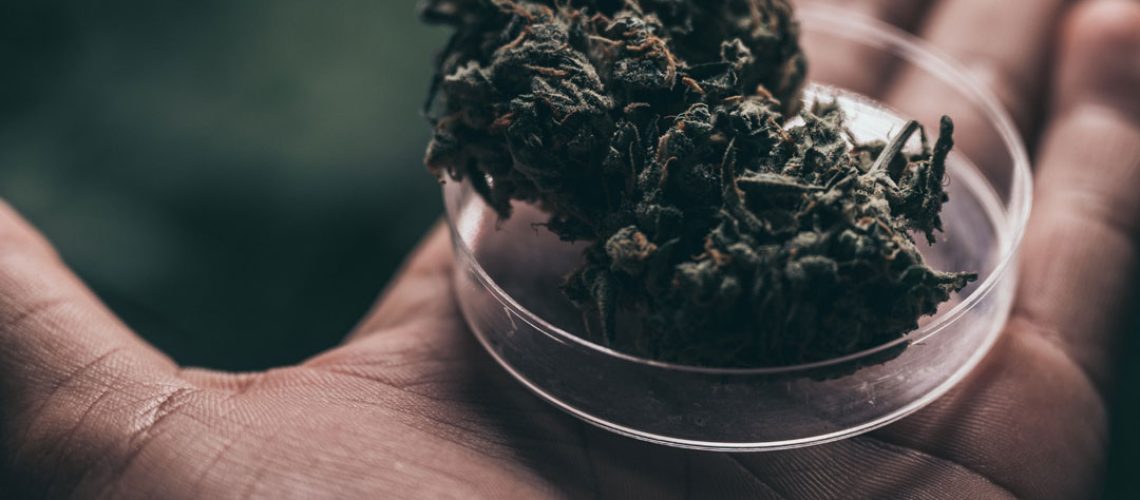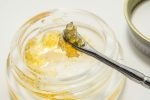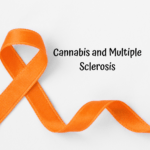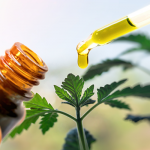We are all used to hearing about the multiple medicinal benefits of CBD and THC, but these aren’t the only cannabinoids produced by the marijuana plant. The plant actually produces more than 120 different cannabinoids and, while CBD and THC, might be the most abundant ones, there are other minors one that also has medicinal properties like CBN (cannabinol) among others.
What is CBN (Cannabinol)?
CBN or cannabinol is one of the cannabinoids THC turns into after time. Usually known for being non-psychoactive (actually less psychoactive than THC) and sedating (might not be attributed to CBN). It is present in high amounts in older buds which usually have a more sedating effect on patients. This is why CBN is known as “the sleepy cannabinoid in old weed” and this is why you will start seeing more products that have CBN in it.
Unfortunately, there’s not a whole lot of research when it comes to CBN and most of the studies are done using rodents which is not the idea subject. An old 1975 study showed that CBN enhances the sedating effects of THC in rats but these rats were also given THC and this is why they might have more sedation.
In 1999 the United Nations Office on Drugs and Crime (UNODC) tested cannabis potency loss over time. According to the study, THC content in the tested cannabis sample dropped to half of its original potency after four years. interestingly, as THC oxidized, it began to convert to CBN. The study also found that the first two years of improper storage were when the most THC degradation occurred, drawing a clear connection between THC-CBN conversion and plant vulnerability. Basically, this study shows that THC turns into CBN over time, which means cannabis will typically become less psychoactive.
Here are a few of the potential benefits of CBN currently being researched. Keep in mind, current research on CBN is limited with very few studies demonstrating its effects in the human body.
Antibacterial
In lab settings, CBN was tested on strains of MRSA or bacteria that are resistant to some antibiotics and found it to be a potent antibacterial agent against these resistant strains. Maybe in the future, we will see CBN being used to fight off bacterial infections that our usual antibiotics can’t treat but, obviously more research needs to be done.
Neuroprotectant
Researchers used CBN as a treatment for ALS and found that it was able to delay the onset of the condition. While human studies need to be done, this suggests that CBN may provide a powerful tool in the fight against neurodegenerative conditions.
Appetite Stimulation
CBN increased the amount of food that rats ate in a research study, suggesting that it could be an effective appetite stimulant. This could be of benefit for those who need to gain weight but, don’t like the psychoactive effects of THC.
Glaucoma
One study using rabbits found that CBN (as well as THC) reduces intraocular pressure—the biggest risk factor for glaucoma. Still, more research needs to be done and currently CBN hasn’t been shown to be superior to other glaucoma medications.
Pain Relief
Through a different mechanism than CBD and THC, CBN can help manage pain. Rather than alleviating pain by way of CB1 or CB2 receptors, CBN releases peptides from sensory nerves, activating an alternative nerve mechanism to achieve the same ends.
Anti-Inflammatory
In rodents, CBN was shown to reduce arthritis. While more research needs to be done, this could end up being an incredible help to those suffering from this debilitating condition but, more research needs to be done.
Can CBN really help you sleep better?
Is called “sleepy weed” so it should help you sleep better, right? Even recently there’s been an increase in products at the dispensaries that have CBN in them and it’s been marketed as a powerful sedative sleeping aid without the euphoria, but this might not be the case. The only study done in humans was a small study conducted in the 1970” s and none of the respondents reported that CBN made them feel sleepy.
So why does everyone say that it’s sedating?
People have noticed that older cannabis (which is high in CBN) makes them sleepy and assumed it must be due to the CBN. But it might also be that the THC still present is causing these effects.
In the same study that found CBN on its own didn’t make subjects sleepy, researchers also tested CBN with THC, and THC alone. While THC produced some drowsiness on its own, the combination of the two produced even higher levels of drowsiness. So perhaps it’s more due to an entourage effect caused by using both of them.
There may be other factors which cause higher CBN cannabis to be sedating.
“Pure CBN is not particularly sedating,” explains leading cannabis researcher Dr. Ethan Russo, “But it is typically found in aged cannabis in which the monoterpenoids have evaporated leaving the more sedating oxygenated sesquiterpenoids. This accounts for the discrepancy.”
So, the older cannabis that is high in CBN is also high in terpenes that cause sedation and these terpenes, rather than the CBN, could account for the sedative effects.
While CBN on it’s own may be as sedating as described by some people you may be able to take advantage of its synergistic effects with THC to get the sleep you are needing.
How to Find CBN?
Leave your weed exposed to the light for 2-3 years and most of the THC will have converted into CBN. This is not an effective way and simply just not feasible. Fortunately, Some dispensaries like Trulieve and Liberty Health Sciences are offering CBN tinctures and patches marketed for sleeping… If you have tried any of these please give us your feedback and leave us a comment below with your experience specifically if it helped you sleep better.
Related
-
What is the difference between THC and THCa
Cannabis is known for it's powerful and intoxicating effects but…
-
Can Cannabis Help Treat Multiple Sclerosis?
Multiple sclerosis (MS) is a disease that causes the body’s…
-
What is CBD and how can it help you?
CBD is one of the more than 100 Cannabinoids found…





One Response
Very neat article post. Really looking forward to read more. Really Cool.